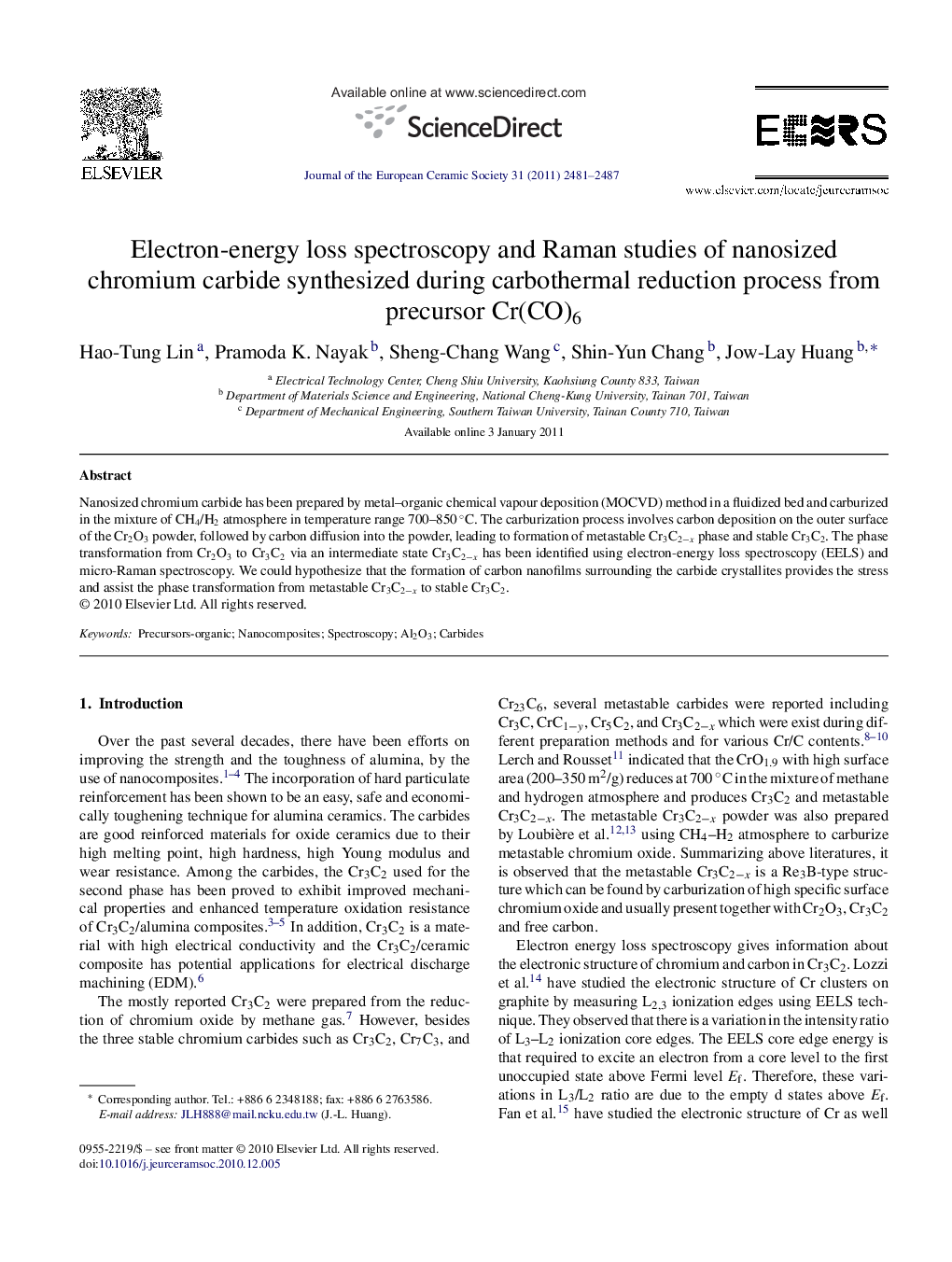| Article ID | Journal | Published Year | Pages | File Type |
|---|---|---|---|---|
| 1475158 | Journal of the European Ceramic Society | 2011 | 7 Pages |
Nanosized chromium carbide has been prepared by metal–organic chemical vapour deposition (MOCVD) method in a fluidized bed and carburized in the mixture of CH4/H2 atmosphere in temperature range 700–850 °C. The carburization process involves carbon deposition on the outer surface of the Cr2O3 powder, followed by carbon diffusion into the powder, leading to formation of metastable Cr3C2−x phase and stable Cr3C2. The phase transformation from Cr2O3 to Cr3C2 via an intermediate state Cr3C2−x has been identified using electron-energy loss spectroscopy (EELS) and micro-Raman spectroscopy. We could hypothesize that the formation of carbon nanofilms surrounding the carbide crystallites provides the stress and assist the phase transformation from metastable Cr3C2−x to stable Cr3C2.
